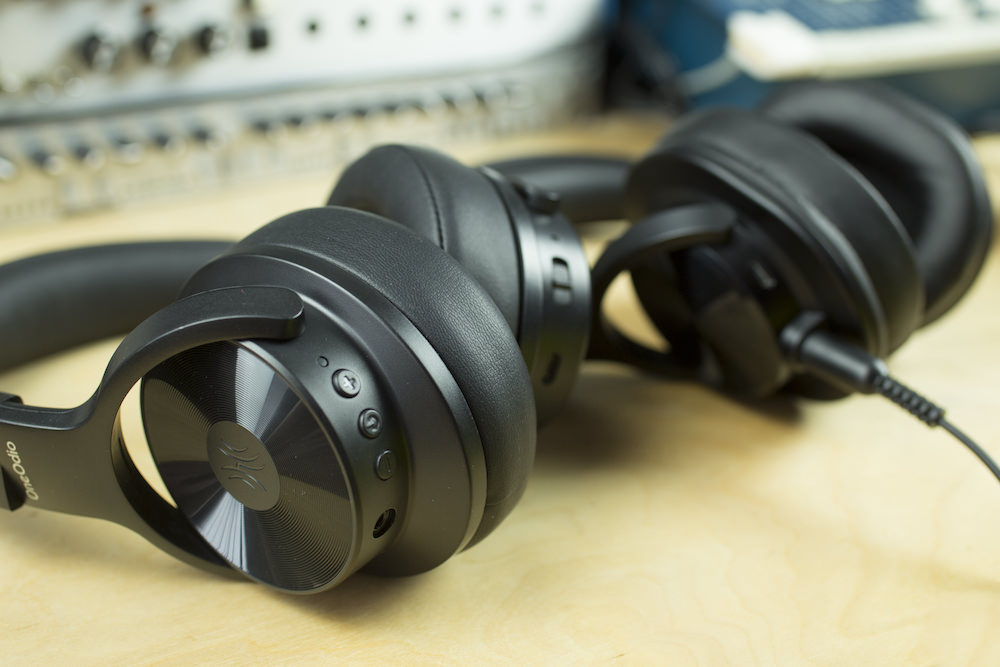Next up on the test bench is two units from OneOdio: the A70 and A30. Both units are attractively priced with the A70 particularly focused on DJing.
Unboxing the A70 & A30
OneOdio is a company aiming to offer good quality headphones at affordable prices. On test in this review are the A70 Fusion and A30 models. Both can work wireless and wired, and the A30 also has a noise-cancelling function. The A70 is described by OneOdio as DJ headphones, while the A30 model is billed as more general purpose.
Physically, both are constructed mostly of plastic, with a metal inner headband. The plastic causes a bit of clunking in use but feels fairly robust. The earpads are covered in PU leather and have a good amount of cushioning. They sit around the ear rather than on it, giving reasonable acoustic isolation. In terms of comfort, the A70 has the edge, seeming to sit a little more lightly on the head, whereas the A30 has a slight clamping feel after extended use. After all, most DJs will wear them for long sets but general-purpose use doesn’t get such extended use…typically.
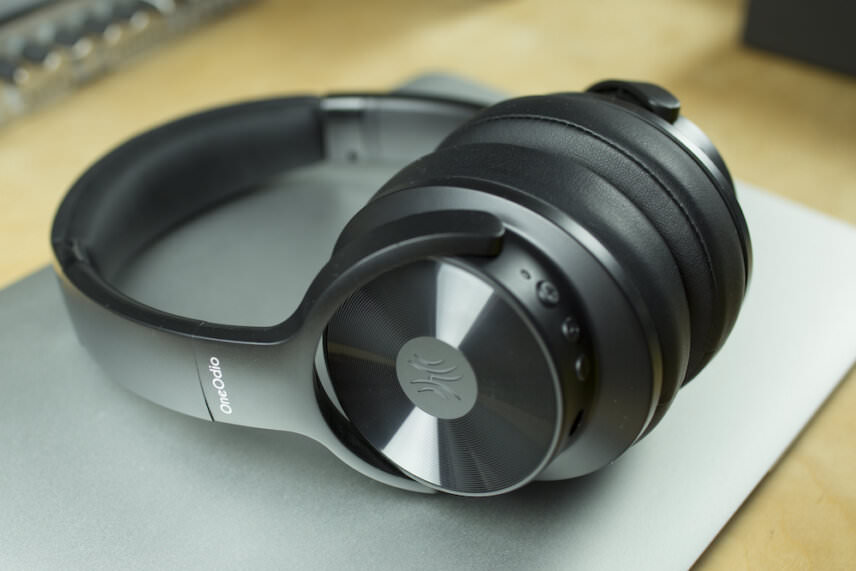
Charging the wireless Bluetooth system is done via a USB connection in one of the ear cups, with a stated charge time of 2.5 hours, and a run time of up to 50 hours for the A70, and 20-50 hours for the A30 depending on whether the noise cancelling is being used. So unless you’re doing a 24 hours live stream, the A70 should set you up well in your DJing. Pairing for wireless operation is straightforward to set up with both models. There are also small buttons on one of the ear cups which can be used to send signals over Bluetooth to adjust the volume and skip tracks.
Both models can be folded, and the cables for wired operation are detachable, helping with ease of storage and transportation. (The A70 has a twist-and-lock function for the cable, presumably to prevent DJing accidents; the A30 doesn’t have this.) The earpieces on both models swivel, so could be used one-sided when DJing.
In terms of sound quality, both models have a quoted frequency response of 20 to 20,000 Hz, but in practice they sounded significantly different. Testing them on a variety of dance music, the first impression with the A70 was of bass, and lots of it! If you’re someone who always turns on the bass boost, these might be ideal. The trouble with this approach is that it can overpower the mids, and blur together low end elements such as kick and bass. The A70 also has a pronounced high end, creating a classic ‘smile curve’ response, with the mids recessed. Subjectively, the overall impression felt a little bit like being in a club, with booming bass and cutting highs.
The A30 model was much more balanced tonally. Bass was present but more controlled than the A70. This gave the mids more space to breathe. The highs had clarity without being harsh. Transient response was also good.
We did some A-B comparisons with a pair of Beyerdynamic DT770 Pros. The A30s held up well. The Beyers were more even and neutral in frequency response (and were also more comfortable), but the difference was less than might be expected given that they are more than twice the price of the A30. With the A70, the comparison confirmed their more hyped sound, with the highs and lows pushed forward and the mids more scooped.
Differences between A70 and A30
There are also some notable differences in features between the A70 and A30. The A70 has an ingenious cable system to avoid the need for jack adapters. It comes with a cable that has a quarter-inch jack at one end and a mini-jack at the other, and there are sockets for both of these on the headphones. The cable can therefore be reversed as required, depending on the type out output on the gear you’re using. This is a clever piece of design and works well.
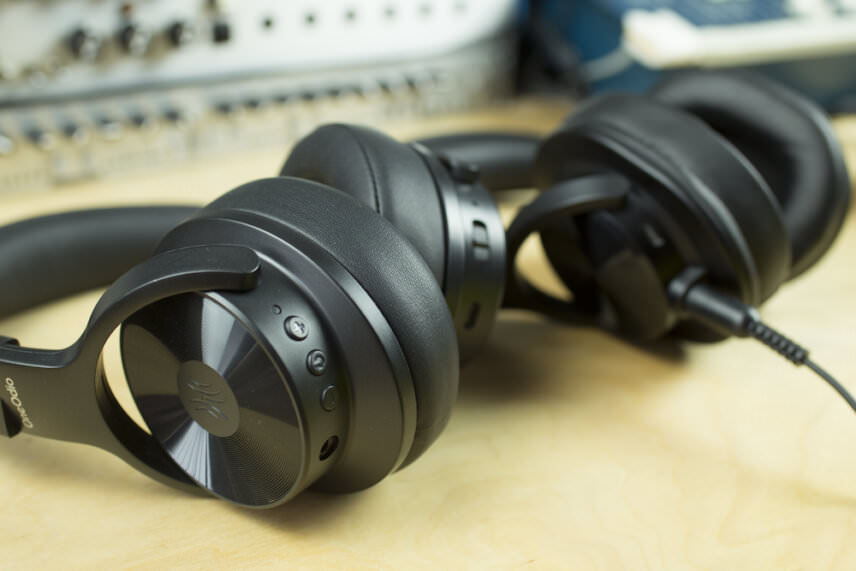
The A30, meanwhile, has active noise cancellation, enabled using a small slide switch on one ear cup. We tried it out in a few different scenarios, with varied results. It worked quite well when walking alongside a busy road. Traffic was still audible but much of the noise was filtered out, particularly at the low end, leaving the music more clearly audible. In other situations we tried, such as indoors with a fan running, the benefits seemed more marginal. The noise cancellation affects the tone of the audio significantly, so is probably only worth turning on where extraneous noise is a serious problem.
Position in market
The final question is where these headphones fit into the market. The A70 and A30 retail at £58 each, and at the time of writing OneOdio’s website offers significant discounts on them, making them very affordable compared to more established brands such as Sennheiser, Pioneer and Audio-Technica.
OneOdio promote the A70 primarily as DJ headphones, and the hyped sound fits with that idea. The wireless aspect wouldn’t be much use for DJing, however. For the purposes of this review, we canvassed several DJs on the subject and they were unanimous: they wouldn’t risk using wireless headphones for a gig, due to latency, the potential for dropouts and battery issues. A cable is more dependable when it comes to keeping the dancefloor moving, so it’s good that these headphones have a wired option.
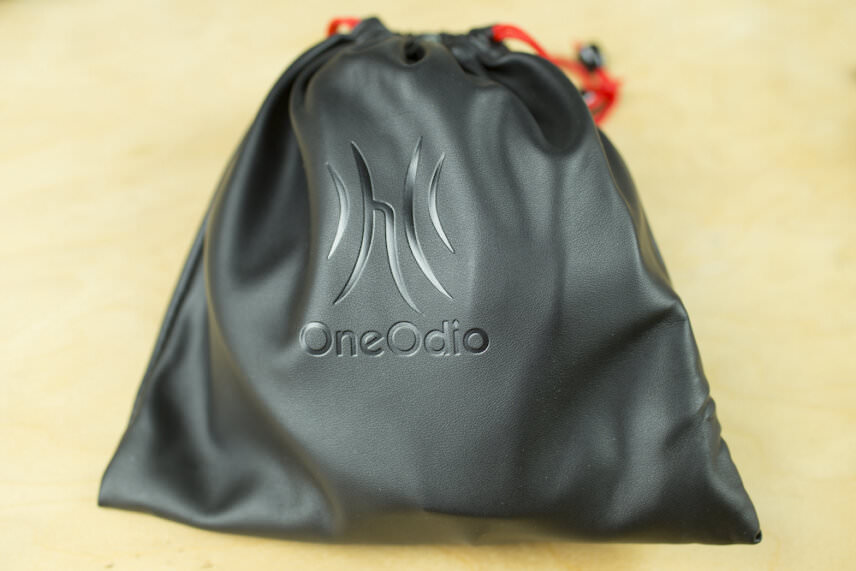
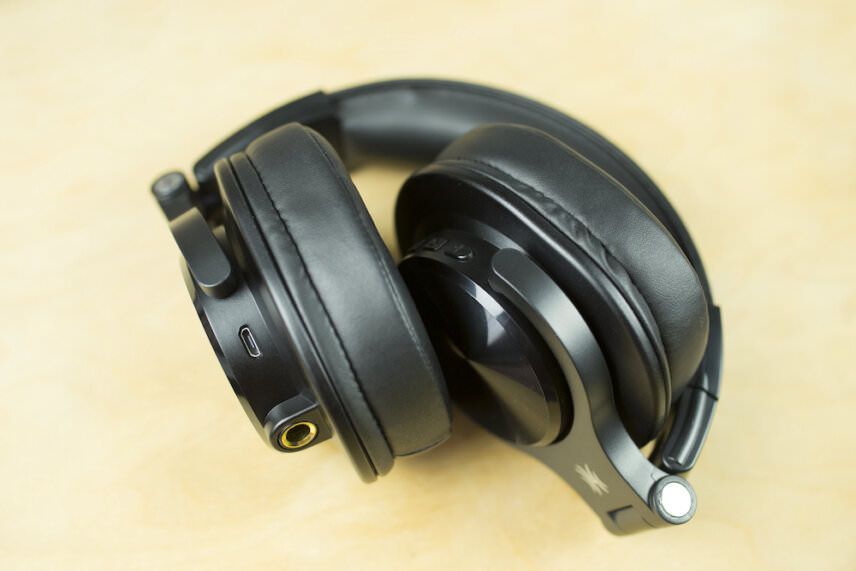
The A70 might therefore best be seen as dual purpose: an inexpensive pair of DJ headphones, particularly suited to DJs who are starting out, and those who want something with a pumped-up sound, with the wireless option as an added bonus. That may not suit people who want maximum simplicity in their DJ headphones, but it has benefits for listening to music in non-DJ situations, such as travelling or exercising.
The A30 seems more of an all-rounder for general purpose music listening, with a balanced sound that would work well with a range of styles. With the wireless option and noise cancellation, the A30 offers maximum flexibility for listening in different environments.
Neither model has the sonic neutrality and comfort over extended periods that are typically needed for studio production work, but for that you would need to spend considerably more money.
The Verdict
Price: £58
Purchase: A70 Fusion (currently discounted to £37)
The Final Word
Affordable headphones with features you might not expect at the price.
The Verdict
Price: £58
Purchase: A30 Fusion (currently discounted to £50)
The Final Word
Affordable headphones with features you might not expect at the price.
